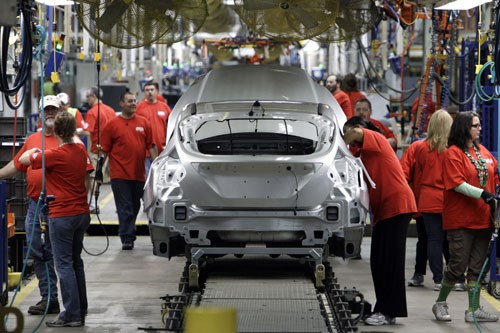 Rules for cars are among the biggest barriers in discussions to overhaul NAFTA. (Source: hanoimoi.com) Rules for cars are among the biggest barriers in discussions to overhaul NAFTA. (Source: hanoimoi.com) |
Since NAFTA took effect in 1994, trade between the US, Mexico, and Canada has grown robustly to 1.2 trillion USD in 2017. But US President Donald Trump has time and again called NAFTA ‘the worst trade deal in American history’, which he said cost the US millions of jobs while giving the Mexico and Canada too many benefits.
US-Mexico deal
Early this week, the US and Mexico reached a deal on rules for cars, one of the biggest sticking points in discussions to overhaul NAFTA.The new deal requires 75 percent of the value of a vehicle to be produced in the US or Mexico, up from the NAFTA threshold of 62.5 percent. Even if more auto plants are built in Mexico, jobs will grow in the US due to high levels of integration. Studies show that US-made parts contribute 40 percent of the value of every Mexican-built car exported to the US.
The new deal also requires greater use of US and Mexican steel, aluminum, glass, and plastics. The US and Mexico agreed to a 16-year lifespan for NAFTA, with a review every six years that can extend the pact for 16 years more, providing more business certainty. The US previously proposed a review of NAFTA every five years. The deal leaves out a previous US demand for trade barriers to protect US seasonal fruit and vegetable growers from Mexican competition.
Positive signal from Canada
The US-Mexico NAFTA agreement opens the door for Canada to immediately rejoin the talks and is a major step forward in updating the accord. Canadian Prime Minister Justin Trudeau said he expects a deal with the US on Friday. Investors predict that Canada may compromise in the egg and dairy processing industry, the biggest hurdle for NAFTA renegotiations between the two nations.